I love dough. I love eating it and making it.
And I love all types of dough: cookie dough, cake dough, pizza dough…
but then there is pasta dough.
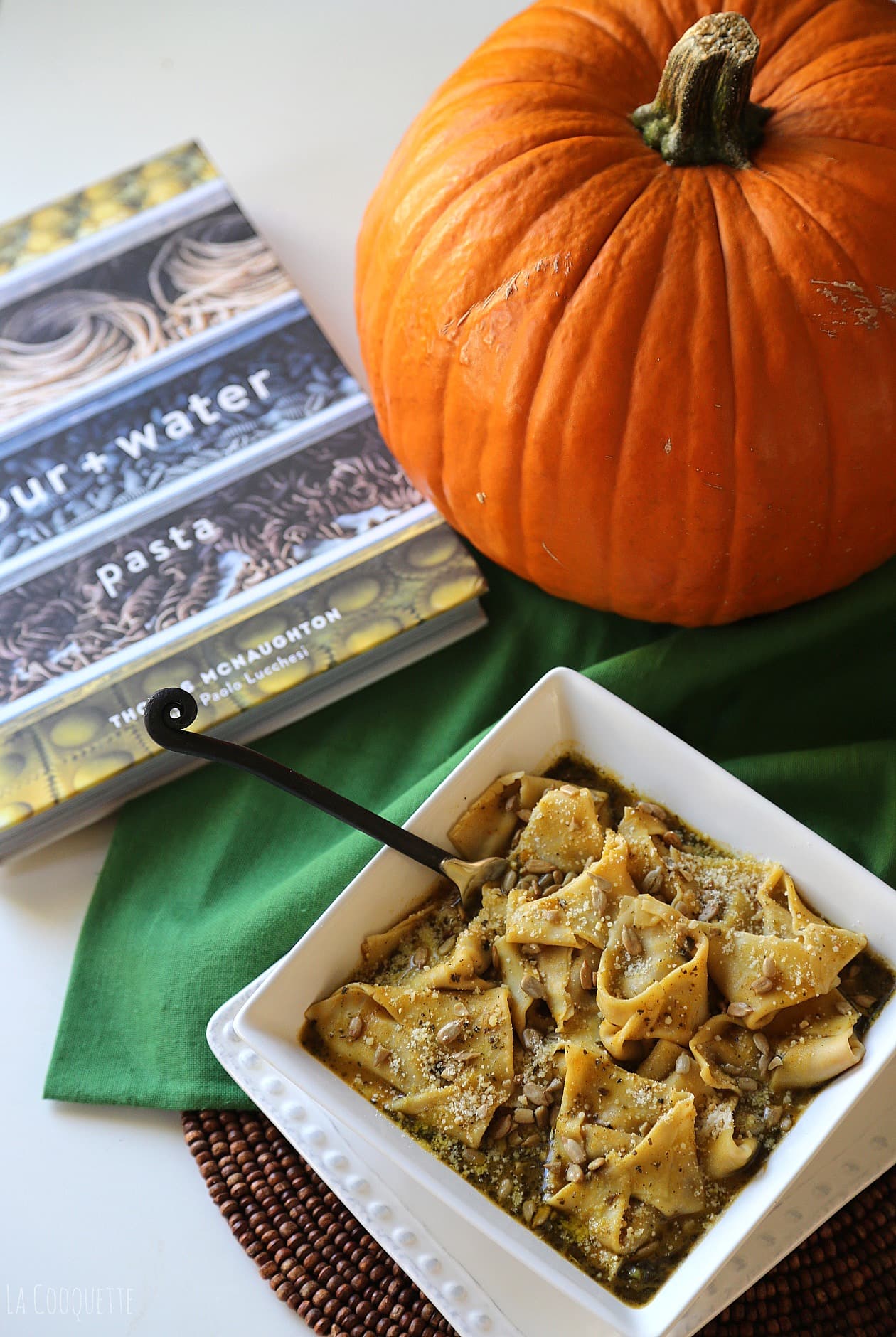
Pasta dough should have its own pedestal of greatness. For me it is the hardest yet most filling (haha carbs, of course!) dough.
So I had this little book called “Flour + Water: Pasta”, by Tom McNaughton… and people in it looked so happy making pasta, I just wanted to feel the same way!

Making pasta was tough like a workout session. But It was beautiful.
I thus made a recipe for Rav Dough (or ravioli dough) to go with one of the yummy recipes of the cookbook, for Pumpkin Tortelloni with Sage and Pumpkin Seeds – check it out!

This was my first time making this recipe for Rav Dough, which is usually used in filled pasta recipes. It requires a lot of eggs, a lot of love and a lot of precision when rolling it out.
But hey, if I, the inexperienced pasta wannabe, could do it, you can too! Check out the process and Chef Tom McNaughton’s recipe below!
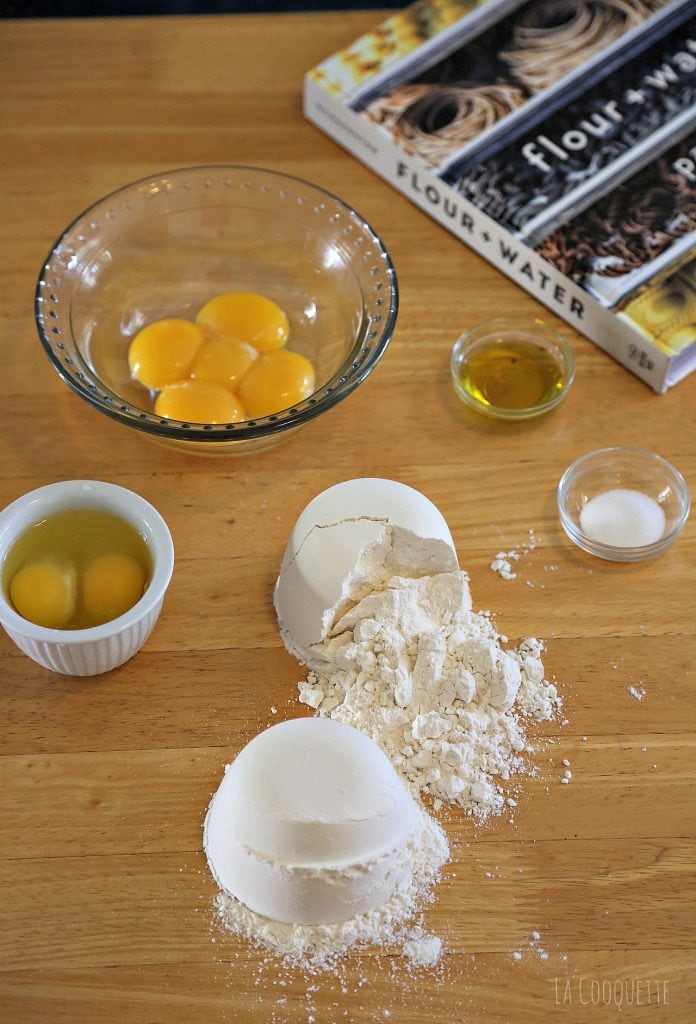
Are you ready?
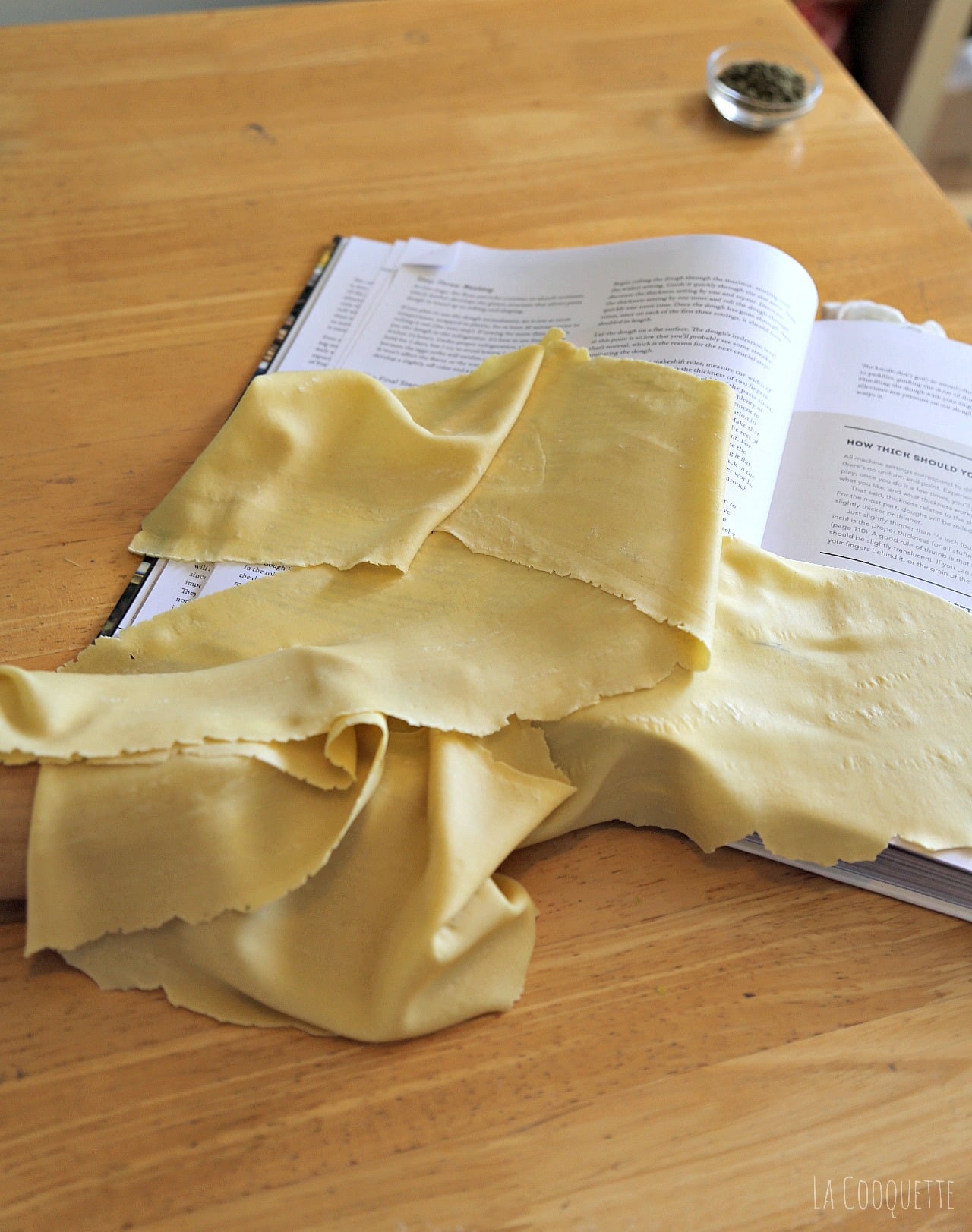
“Rav Dough” Recipe
(serves 4)
Original recipe by Chef Thomas McNaughton (copied from the “Flour + Water: Pasta” cookbook, pg. 7 )
The ingredients I switched are marked with an *
My comments in italics
INGREDIENTS
- 360 grams 00 flour (2 well-packed cups, unsifted) *If you can´t find that one, I used all-purpose flour my first time
- 5 grams kosher salt (1 teaspoon)
- 100 grams whole eggs ( ½ cup – about 2 large eggs)
- 90 grams egg yolks (1/3 cup – about 5 to 6 egg yolks)
- 6 grams extra-virgin olive oil (1 ½ teaspoons)
Step One: Mixing
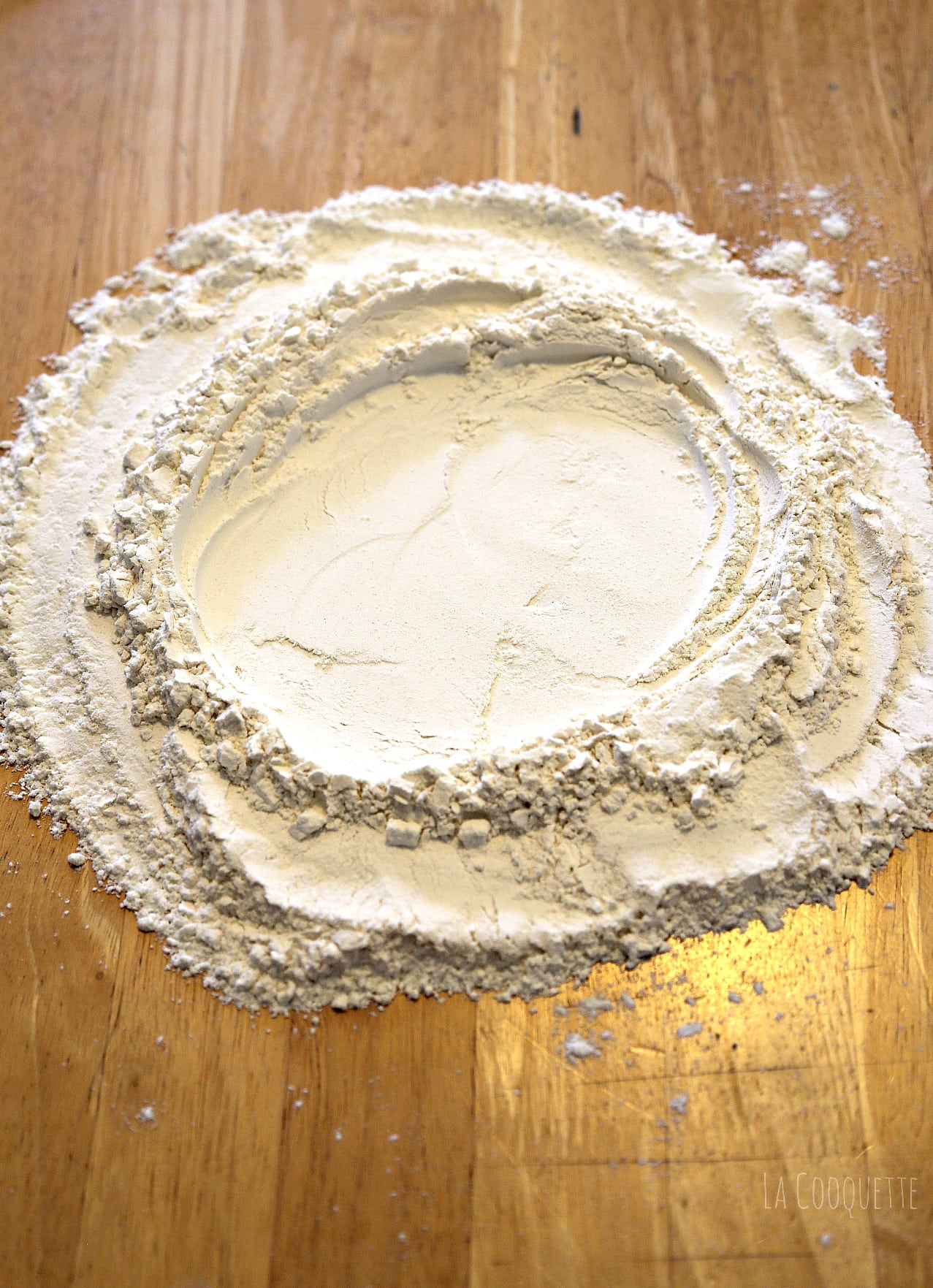
Place the flour on a dry, clean work surface, forming a mound about 8 to 10 inches in diameter. Sprinkle the salt over the middle of the mound. Using the bottom of a measuring cup, create a well 4 to 5 inches wide, with at least half an inch of flour on the bottom of the well.
Carefully add the eggs, egg yolks, and olive oil into the well. Using a fork, gently beat the eggs without touching the flour walls or scraping through the bottom of the work surface.

Then, still stirring, begin to slowly incorporate the flour “walls” into the egg mixture, gradually working your way toward the outer edges of the flour, disturbing the base as little as possible. If the eggs break through the wall, quickly scoop them back in and reform the wall. Once the dough starts to take on a thickened, paste-like quality called a slurry, slowly incorporate the flour on the bottom.
When the slurry starts to move as a solid mass, remove as much as possible from the fork. Slide a bench scraper or spatula under the mass of dough and flip, turning it onto itself to clear any wet dough from the work surface.
At this point, with your hands, start folding and forming the dough into a single mass. The goal is to incorporate all the flour into the mass. Using a spray bottle to liberally spritz the dough with water is essential. The dough will be very dry, and it’s essential that you generously and constantly spritz to help any loose flour stick to the dry dough ball. If you don’t have a spritzer, you can just moisten up your hands and then continue folding and forming the dough.
When the dough forms a stiff, solid mass, scrape away any dried clumps of flour from the work surface and discard them (if incorporated into the dough, they’ll show up as dry spots in the pasta). If you fold it quickly and have enough water on your hands, you can probably escape this. I did!
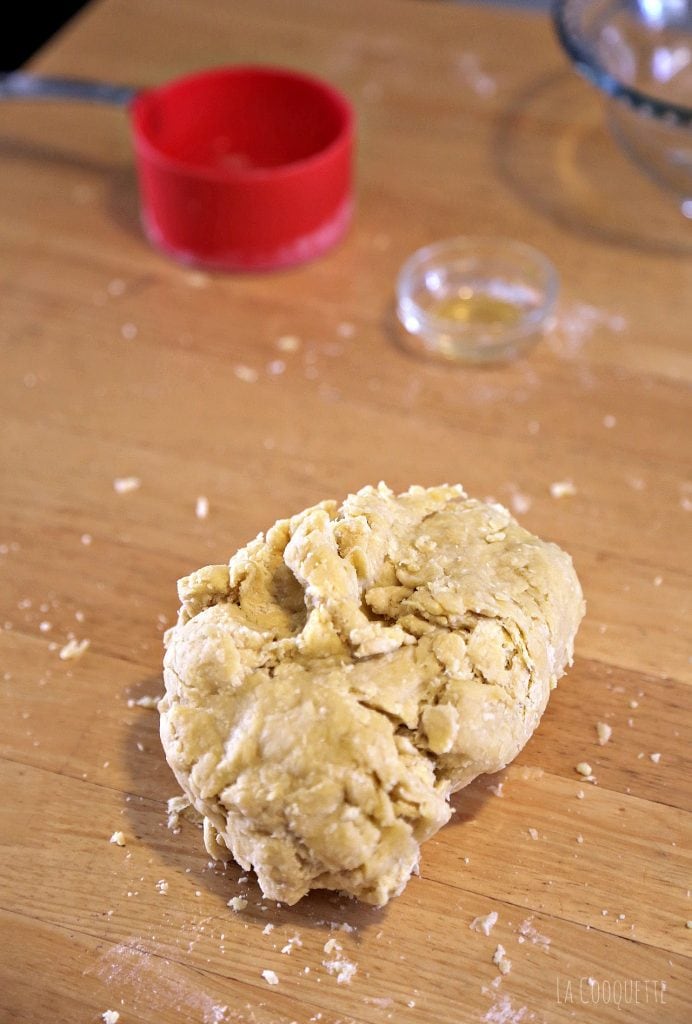
Step Two: Kneading
Kneading is essential in the dough-making process: It realigns the protein structure of the dough so that it develops properly during the resting stage that follows. Pasta is easy to underknead but virtually impossible to overknead. It’s simple—drive the heel of your dominant hand into the dough. Push down and release, and then use your other hand to pick up and rotate the dough on itself 45 degrees.
Drive the heel of your hand back in the dough, rotate, and repeat for 10 to 15 minutes. When the dough is ready, it will stop changing appearance and texture. The dough will be firm but bouncy to the touch and have a smooth, silky surface, almost like Play-Doh. Tightly wrap the dough in plastic wrap.

Step Three: Resting
At this stage, the flour particles continue to absorb moisture, which further develops the gluten structure that allows pasta dough to stand up to rolling and shaping.
If you plan to use the dough immediately, let it rest at room temperature, wrapped in plastic, for at least 30 minutes prior to rolling it out (the next step). If resting for more than 6 hours, put the dough in the refrigerator. It’s best to use fresh dough within 24 hours. Under proper refrigeration, the dough will hold for 2 days, but avoid letting it rest that long, since the yolks will oxidize and discolor the dough.
Step 4: Rolling
Rolling is the last phase of the mixing process. Rolling out by machine, hand-crank model or electric one, should be a delicate, almost Zen-like art. You can only roll out dough that has rested for at least 30 minutes at room temperature. If it has rested for longer in the fridge, give it enough time to come back to room temperature. The fat content of pasta dough is so high that it will solidify when cold, so it needs to come back to room temperature to be easier to roll.
To start, slice off a section of the ball of dough, immediately rewrapping the unused portion in plastic. Place the piece of dough on the work surface and, with a rolling pin, flatten it enough that it will fit into the widest setting of the pasta machine. You do not want to stress the dough or the machine.
Try not to add any raw flour in the rolling process. Extra flour added at this point sticks to the dough and, when cooked, that splotch turns into a gooey mass, a slick barrier to sauce. It dulls the seasoning and flavors of both the dough and the finished dish. Begin rolling the dough through the machine, starting with the widest setting. Guide it quickly through the slot once. Then decrease the thickness setting by one and repeat. Decrease the thickness setting by one more and roll the dough through quickly one more time. Once the dough has gone through three times, once on each of the first three settings, it should have doubled in length.
Lay the dough on a flat surface. The dough’s hydration level at this point is so low that you’ll probably see some streaks. That’s normal, which is the reason for the next crucial step: laminating the dough.
Using a rolling pin as a makeshift ruler, measure the width of your pasta machine’s slot, minus the thickness of two fingers. This measurement represents the ideal width of the pasta sheet, with about a finger’s length on each side so there’s plenty of room in the machine. Take that rolling pin measurement to the end of the pasta sheet and make a gentle indentation in the dough to show the measurement’s length. With that mark as the crease, fold the pasta over. Repeat for the rest of the pasta sheet, keeping that same initial measurement.
For best results, you want at least four layers. Secure the layers of the pasta together with the rolling pin, rolling it flat enough that it can fit in the machine. Put the dough back in the machine, but with a 90-degree turn of the sheet, so that what was the bottom edge of the pasta is now going through the machine first.
This time around, it’s important to roll out the dough two to three times on each setting at a steady, smooth pace (the dough contains a gluten network, so if you roll it too fast, it’ll snap back to its earlier thickness). The more slowly you crank the pasta dough, the more compression time the dough has; it’s important to stay consistent in the speed in order to keep a consistent thickness. You should be able to see and feel the resistance as the dough passes through the rollers.
On the first time at each level, the dough will compress. It’s time to move onto the next level when the dough slips through without any trouble. The first few thickness settings (the biggest widths) usually require three passes. Once you’re into thinner territory, there’s less pasta dough compressing, so it goes more quickly and two passes should get the job done.
When handling the sheet of dough (especially as it gets longer) always keep it taut and flat. Never grab, flop, or twist the sheet. The sheet should rest on the inside edges of your index fingers with your fingers erect and pointed out. The hands don’t grab or stretch the dough; instead, they act as paddles, guiding the sheet of dough through the machine. Use the right hand to feed the machine and use the left hand to crank. Once the pasta dough is halfway through, switch hands, pulling out with the left hand. If you have trouble doing it alone as the dough gets longer and thinner, find a friend to help juggle the dough, or roll out a smaller, easier-to-wield batch.
Once you roll out the dough, immediately form it into the shapes your recipe calls for.
Like in these cute pumpkin tortellonis!
Disclaimer: I received this book from the Blogging for Books program in exchange for this review. However, all thoughts and expressions are my own – because it is THAT good!

I think your written recipe is missing the egg yolks…
Thanks for the note! I just corrected it and added the quantity – 5-6 egg yolks 🙂 hope you make delicious ravs!
Yes, but it will take a little logner. If you have a gas oven the pilot light will keep it ideal. I have four of those big lightbulbs in my bathroom. Sometimes I put the dough in there and leave the lights on and the door closed. Works well. Another thing you might consider is fill your crock pot with water, turn it on to warn and hang the dough bowl into the water. Check it about every 30 minutes so as to not kill the yeast if it gets too hot.I make yogurt in there all the time like that.